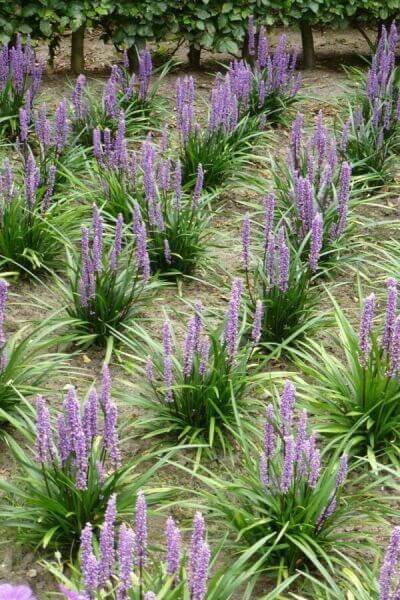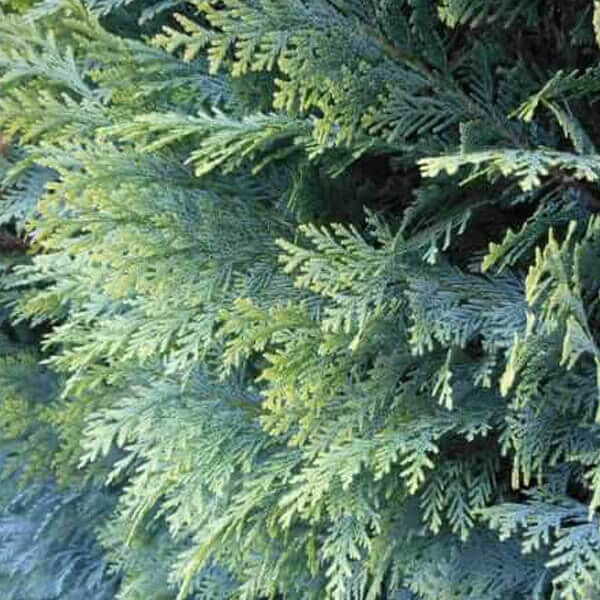Hedge Plants For Heat Tolerance
Hedge Plants For Heat Tolerance
Blog Article
Best Hedging Plants For Raised Beds
Boost your garden's allure with lush hedge varieties such as Yew (Taxus), Thuja, Laurel, Photinia, and Bamboo, commemorated for their structural integrity and ecological benefits.
Yew and Thuja offer evergreen protection and winter durability, while Laurel offers fast development and broad, aromatic leaves.
Photinia includes seasonal appeal with its vibrant red foliage, and Bamboo provides a low-maintenance, serene ambiance.
These hedges enhance air quality, reduce noise, and develop tranquil, private spaces.
Correct planting, spacing, and maintenance guarantee energetic development and ecological harmony.
Check out how these lavish varieties can elevate your garden's appeal and wellness.
Key Takeaways
Transform Your Garden With Lush Hedge Varieties
- Select Yew for its thick, evergreen development and unparalleled longevity.
- Go with Laurel for its quick growth and broad leaves, ensuring quick personal privacy.
- Pick Photinia for its lively seasonal foliage, which turns a striking dark red.
- Utilize Bamboo for a low-maintenance, winter-hardy hedge with aesthetic appeal.
- Space plants 2-3 per meter and prune routinely for ideal development and health.
Popular Hedge Plants
When changing a garden with lavish hedge ranges, it's important to consider popular hedge plants such as Yew, Thuja, Laurel, and Photinia due to their distinct qualities and benefits.
Yew (Taxus) is highly esteemed for its longevity and dense, green growth, making it a prime choice for enduring landscapes.
Thuja is kept in mind for its evergreen foliage and robust winter season strength.
Photinia includes seasonal vibrancy with red leaves that darken with time, producing vibrant visual appeal.
Laurel provides fast growth and fragrant, broad leaves, perfect for fast personal privacy.
Furthermore, Bamboo is an exceptional option for ambiance, offering a low-maintenance, winter-hardy option that boosts the garden's visual with its stylish, swaying canes.
These selections deal with a range of horticultural needs and preferences.
Advantages of Garden Hedges
Garden hedges provide a wide variety of benefits, making them a valuable addition to any landscape. These natural barriers are cost-efficient to carry out and supply considerable wind protection, boosting air blood circulation and adding to noise reduction. The thick foliage of hedges like Thuja and Beech guarantees privacy by blocking exposure, developing a tranquil and secluded environment.
Hedges likewise play a vital role in microclimate guideline, offering a steady environment that promotes plant growth and lessens temperature variations. Their elaborate leaf structures filter toxins, improving air quality and adding to a healthier garden environment.
Moreover, hedges master noise reduction, soaking up and deflecting sound waves to lower ambient sound levels. This dual performance of supplying both acoustic and visual personal privacy enhances the total tranquility and aesthetic appeal of any garden.
Planting and Upkeep Tips
For a successful hedge, precise preparation of the planting location is crucial. Guarantee the soil has appropriate pH and drain to support strong root development.
Space the plants properly for the picked species. Water the hedge often during its initial development stage, adjusting as needed with seasonal modifications.
Carry out a systematic insect control and illness avoidance method, using chemical or organic treatments when needed. Frequently inspect for aphids, mites, and fungal infections.
Apply mulch to retain wetness and reduce weeds. Seasonal pruning promotes dense growth and air flow, vital for plant health.
Following these standards will assist you cultivate a lively, well-maintained hedge that enhances the beauty of your garden.
Spacing and Trimming Guidelines
Spacing and Trimming Guidelines
Appropriate spacing and trimming are essential for cultivating healthy, visually appealing hedges. Sufficient spacing guarantees each plant receives sufficient nutrients, light, and airflow.
Follow these guidelines for optimal hedge maintenance:
- Spacing: Position hedge plants 2-3 plants per meter to motivate robust development.
- Pruning Techniques: Regular pruning is vital for maintaining preferred hedge height and shape. Trim new growth in summertime and cut back older wood throughout winter.
- Seasonal Care: Change cutting schedules and methods according to seasonal requirements to make sure plant health.
- Hedge Height: Frequently display and cut to preserve the preferred hedge height and achieve uniform aesthetics.
Following these steps will guarantee your hedge prospers, improving both the appeal and functionality of your garden.
Picking the Right Hedge
Selecting the Right Hedge
Selecting the proper hedge includes evaluating aspects such as mature height, foliage density, and environmental strength. Effective hedge plant choice requires comprehending each types' growth qualities and site-specific versatility.
For example, Yew (Taxus) offers excellent durability and dense development, while Thuja is significant for its winter season durability. Furthermore, thinking about upkeep requirements is crucial; fast-growing species like Laurel or Privet demand regular cutting, whereas low-maintenance alternatives like Bamboo or Ivy may be preferable for those seeking minimal upkeep.
Environmental elements such as soil type, light accessibility, and moisture conditions must likewise assist the choice procedure. This cautious method guarantees the selected hedges will prosper, offering both practical and aesthetic benefits to the garden landscape.
Delivery and Planting Guidance
To ensure your hedge plants thrive, they should be provided by specialized carriers and planted without delay upon arrival.
Follow these necessary steps for effective planting:
- Soil Preparation: Improve the soil with raw material to enhance drainage and nutrient content.
- Planting Depth: Develop a trench two times the width and equal to the depth of the root ball.
- Watering Techniques: Water completely after planting, keeping the soil regularly moist however not filled.
- Mulching: Apply a layer of mulch to keep wetness and reduce weeds.
Client Assistance and Service
Given the important function of prompt help in horticultural pursuits, our customer support group is readily available 6 days a week through telephone, email, and social media to provide professional guidance and promptly attend to any concerns. Their devotion to quick action times ensures consumer complete satisfaction by resolving inquiries related to plant health, ideal planting methods, and maintenance schedules.

-----------------
This thorough support group, reinforced by an excellent 9.3/ 10 client rating, highlights our dedication to boosting the gardening experience for every single client.
Regularly Asked Concerns
The Length Of Time Does It Take for Hedge Plants to Develop?
Hedge plants normally require one to 3 years to become completely developed, with the precise period varying by types and growing conditions.
Effective care throughout this critical duration is necessary for robust growth. Constant watering, vigilant weed control, and Additional info suitable fertilizer application are essential in promoting strong root development.
For example, fast-growing types like Laurel may establish faster, while slower-growing varieties such as Yew may take longer. Diligent upkeep speeds up the establishment process, resulting in thick and healthy hedges.
What Are the Best Hedge Plants for Personal Privacy?
The question of the very best hedge plants for personal privacy includes evaluating evergreen and deciduous choices.
Evergreen hedges like Thuja, Laurel, and Cypress offer year-round protection, ensuring continuous privacy.
In contrast, deciduous hedges such as Beech provide seasonal personal privacy, shedding leaves in colder months.
Key maintenance ideas for personal privacy hedges consist of routine trimming, fertilizing in spring, and proper spacing-- generally 2 to 3 plants per meter.
Furthermore, consistent watering and persistent weed removal are important for promoting healthy, dense growth.
Can Hedge Plants Draw In Wildlife to My Garden?
Yes, hedge plants can draw in wildlife to your garden by offering important benefits like shelter, food, and nesting sites, thereby enhancing regional biodiversity. Yew, holly, and laurel are outstanding for attracting birds, while ivy supports a variety of pests.
However, it is very important to note that there are some disadvantages, such as increased upkeep to manage pests and routine maintenance. Carefully selecting and maintaining hedge ranges can assist balance these benefits and downsides, eventually promoting a vibrant and sustainable community in your garden.
Are There Any Blooming Hedge Plants Available?
Yes, there are flowering hedge plants offered that can boost the charm of your garden.
For example, Elaeagnus, likewise called Olive Willow, produces aromatic white flowers in the fall, adding a touch of sophistication.
Photinia, another popular choice, showcases lively red leaves that develop into an abundant green, creating a vibrant visual effect throughout the seasons.
To make sure these plants flourish, it's important to practice proper pruning strategies and seasonal maintenance, such as cutting brand-new growth in the summertime and cutting back in the winter.
These procedures will help preserve the health and aesthetic appeal of your flowering hedges.
How Do I Avoid Pests in My Hedge Plants?
To prevent insects in hedge plants, use natural pest control techniques and keep proper hedge care. Introduce helpful insects like ladybugs, which prey on hazardous bugs, to develop a balanced community.
Routinely check your hedges for signs of infestation and immediately remove any affected parts to avoid the spread. Make sure the health of your hedges by applying balanced fertilizers and providing sufficient water.
Use mulching to retain soil moisture and proper spacing to decrease plant stress and promote robust growth. These practices collectively help in decreasing bug concerns and keeping a healthy hedge.
Conclusion
In essence, picking the ideal hedge ranges such as Yew, Thuja, and Laurel can change any garden into a relaxing sanctuary. These plants offer year-round greenery, enhance aesthetic appeal, and offer useful advantages like sound reduction and wind protection.
Proper planting strategies, precise spacing, constant watering, and seasonal trimming are vital for optimal development.
Reliable shipment services and professional consumer support guarantee a smooth experience from purchase to planting, making it easier than ever to elevate your outdoor space.
Garden hedges provide a plethora of benefits, making them a valuable addition to any landscape. These natural barriers are affordable to execute and supply substantial wind defense, boosting air circulation and contributing to noise reduction. The dense foliage of hedges like Thuja and Beech ensures personal privacy by blocking exposure, developing a secluded and peaceful environment.

Pruning Strategies: Routine pruning is vital for preserving desired hedge height and shape. Cut new growth in summer season and cut back older wood during winter season.
Report this page